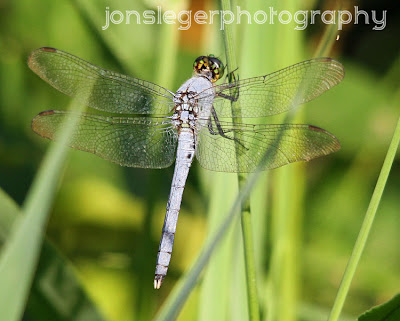WARBLERS OF THE SOUTHWEST
 |
| Yellow Warbler, 1st-year, San Pedro Riparian Natural Conservation Area, Sierra Vista, AZ, 4/10/2012. |
On my Spring Break trip to Arizona, I was hoping to add a few new birds to my list, particularly some warblers. Typically, the Midwest and Eastern U.S. have a much larger variety of warbler species to see than the Western U.S., but there are a few species that are more likely to be found in the West and Southwest and of course those species that can be found throughout the entire country, such as the Yellow Warbler (Above).
Warblers that can be seen in the Western States during the Summer
Western: Orange-crowned*, Wilson's*, Black-throated Gray*, Yellow-rumped Audubon's*, MacGillivray's
Northwest and North Central West: Nashville, Townsend's, Hermit, American Redstart*, Northern Waterthrush, Ovenbird
Southwest: Virginia, Lucy's*, Grace's, Red-faced, Painted Redstart*, Olive (Locally southeast AZ southwest NM), Colima (Locally in the Big Bend area of Texas)
West and East: Yellow*, Common Yellowthroat*, Yellow-breasted Chat*
* Denotes the warblers that I observed in Southeast Arizona during April, 2012.
 |
| Yellow Warbler, 1st-year, San Pedro Riparian Natural Conservation Area, Sierra Vista, AZ, 4/10/2012. |
There were Yellow Warblers all over the San Pedro Riparian NCA in early April, and then they show up in my hunting grounds of Northern Illinois in late April. I saw both mature adults and ther paler 1st-Years (Above).
 |
| Yellow-rumped Warbler, Ramsey Canyon,Sierra Vista, AZ; 4/9/2012. |
Another very common warbler seen in the West is the Yellow-rumped Audubon's (Above and Below), which is distinguished from the Eastern species (Yellow-rumped Myrtle) with its yellow throat. The Myrtle has a white throat.
 |
| Yellow-rumped Warbler, San Pedro Riparian Natural Conservation Area, Sierra Vista, AZ, 4/10/2012. |
 |
| Orange-crowned Warbler, San Pedro Riparian Natural Conservation Area, Sierra Vista, AZ, 4/10/2012. |
What I thought was a Yellow Warbler sneaking around the heavy brush, when I first saw it, turned out to be an Orange-crowned warbler (Above). It was my first sighting of this species. Hooray!
In the next few days, i will post pictures of some more Southwest Warblers that I saw on my Spring break trip: Wilson's, Lucy's, Painted Redstart, and Black-throated Gray.
























































